 W
WThe American Expeditionary Forces was a formation of the United States Army on the Western Front of World War I. The AEF was established on July 5, 1917, in France under the command of Gen. John J. Pershing. It fought alongside French Army, British Army, Canadian Army, and Australian Army units against the Imperial German Army. A minority of the AEF troops also fought alongside Italian Army units in that same year against the Austro-Hungarian Army. The AEF helped the French Army on the Western Front during the Aisne Offensive in the summer of 1918, and fought its major actions in the Battle of Saint-Mihiel and the Meuse-Argonne Offensive in the latter part of 1918.
 W
WThe Indigenous Army, also known as the Army of Saint-Domingue, was the moniker bestowed to the coalition of anti-slavery rebels who fought in the Haitian Revolution. Encompassing both black slaves and affranchis, the rebels were not officially titled the Armée indigène until January 1803, under the leadership of then-general Jean-Jacques Dessalines. Predated by insurrectionists such as François Mackandal, Vincent Ogé and Dutty Boukman, the rebellion would become organized and consolidated under the leadership of Toussaint Louverture; succeeded by Dessalines. The now full-fledged fighting force would utilize their sheer manpower and strategic capacity to overwhelm French troops, ensuring the Haitian Revolution as the most successful of its kind.
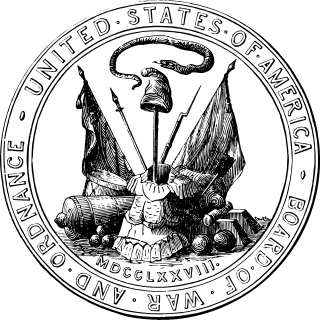 W
WThe Continental Army was formed by the Second Continental Congress after the outbreak of the American Revolutionary War by the former British colonies that later became the United States of America. Established by a resolution of the Congress on June 14, 1775, it was created to coordinate the military efforts of the Thirteen Colonies in their ultimately successful revolt against British rule. The Continental Army was supplemented by local militias and volunteer troops that remained under control of the individual states or were otherwise independent. General George Washington was the commander-in-chief of the army throughout the war.
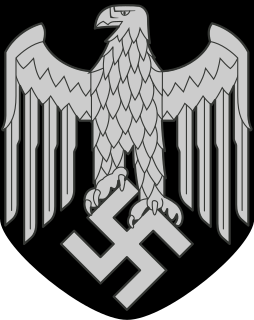 W
WThe German Army was the land forces component of the Wehrmacht, the regular German Armed Forces, from 1935 until it ceased to exist in 1945 and then formally dissolved in August 1946. During World War II, a total of about 13.6 million soldiers served in the German Army. Army personnel were made up of volunteers and conscripts.
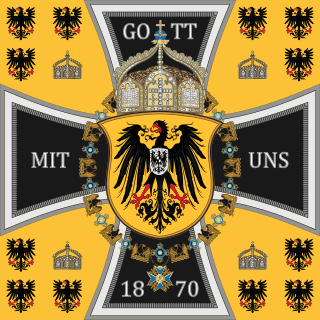 W
WThe Imperial German Army was the unified ground and air force of the German Empire. The term Deutsches Heer is also used for the modern German Army, the land component of the Bundeswehr. The German Army was formed after the unification of Germany under Prussian leadership in 1871 and dissolved in 1919, after the defeat of the German Empire in World War I.
 W
WThe Ili National Army was the army of the East Turkestan Republic (ETR) that originally consisted of six regiments: the Suidun Infantry Regiment, the Ghulja Regiment, the Kensai Regiment, the Ghulja Reserve Regiment, the Kazakh Cavalry Regiment, the Dungan Regiment, the Artillery Subdivision, the Sibo Subdivision, and the Mongol Subdivision. The last two subdivisions were later reformed to regiments. All regiments were armed with mostly German-made weapons, provided by the Soviet Union by order of Joseph Stalin ; its personnel was trained in the Soviet Union. Rebel aviation included 42 airplanes, captured in Ghulja Kuomintang air base and repaired by Soviet military personnel.
 W
WThe Indian Legion, officially the Free India Legion or 950th (Indian) Infantry Regiment, was a military unit raised during the Second World War initially as part of the German Army and later the Waffen-SS from August 1944. Intended to serve as a liberation force for British-ruled India, it was made up of Indian prisoners of war and expatriates in Europe. Because of its origins in the Indian independence movement, it was known also as the "Tiger Legion", and the "Azad Hind Fauj". As part of the Waffen-SS it was known as the Indian Volunteer Legion of the Waffen-SS.
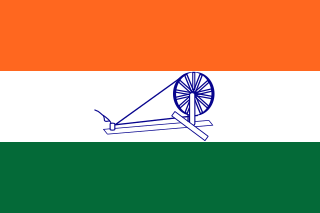 W
WThe Indian National Army was an armed force formed by Indian nationalists and Imperial Japan in 1942 in Southeast Asia during World War II. Its aim was to secure Indian independence from British rule. It fought alongside Japanese soldiers in the latter's campaign in the Southeast Asian theatre of WWII. The army was first formed in 1942 under Mohan Singh, by Indian PoWs of the British-Indian Army captured by Japan in the Malayan campaign and at Singapore. This first INA collapsed and was disbanded in December that year after differences between the INA leadership and the Japanese military over its role in Japan's war in Asia. Rash Behari Bose handed over INA to Subhas Chandra Bose. It was revived under the leadership of Subhas Chandra Bose after his arrival in Southeast Asia in 1943. The army was declared to be the army of Bose's Arzi Hukumat-e-Azad Hind. Under Bose's leadership, the INA drew ex-prisoners and thousands of civilian volunteers from the Indian expatriate population in Malaya and Burma. This second INA fought along with the Imperial Japanese Army against the British and Commonwealth forces in the campaigns in Burma: at Imphal and Kohima, and later against the Allied retaking of Burma.
 W
WThe 1st Infantry Battalion of the Royal Netherlands East Indies Army was a Dutch colonial military unit that was active in the Dutch East Indies during World War II and the Indonesian National Revolution.
 W
WThe Colonial Reserve Corps was an arm of the Royal Netherlands East Indies Army and an important recruitment depot. The Corps existed from 1890 to 1951 and was located in the Prins Hendrikbarracks in Nijmegen.
 W
WThe Korps Marechaussee te voet were a colonial gendarmerie of the Royal Netherlands East Indies Army (KNIL), principally used for counter-insurgency in the Dutch East Indies.
 W
WThe Royal Netherlands East Indies Army was the military force maintained by the Netherlands in its colony of the Netherlands East Indies, in areas that are now part of Indonesia. The KNIL's air arm was the Royal Netherlands East Indies Army Air Force. Elements of the Royal Netherlands Navy were also stationed in the Netherlands East Indies.
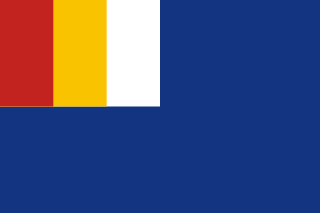 W
WThe Inner Mongolian Army, also sometimes called the Mengjiang National Army, referred to the Inner Mongolian military units in service of Imperial Japan and its puppet state of Mengjiang during the Second Sino-Japanese War, particularly those led by Prince Demchugdongrub. It was primarily a force of cavalry units, which mostly consisted of ethnic Mongols, with some Han Chinese infantry formations.
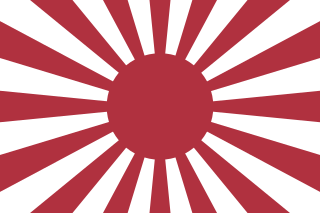 W
WThe Imperial Japanese Army was the official ground-based armed force of the Empire of Japan from 1868 to 1945. It was controlled by the Imperial Japanese Army General Staff Office and the Ministry of the Army, both of which were nominally subordinate to the Emperor of Japan as supreme commander of the army and the Imperial Japanese Navy. Later an Inspectorate General of Aviation became the third agency with oversight of the army. During wartime or national emergencies, the nominal command functions of the emperor would be centralized in an Imperial General Headquarters (IGHQ), an ad hoc body consisting of the chief and vice chief of the Army General Staff, the Minister of the Army, the chief and vice chief of the Naval General Staff, the Inspector General of Aviation, and the Inspector General of Military Training.
 W
WThe Land Forces of the National People's Army, was the ground-based military branch of the German Democratic Republic (GDR) National People's Army (NPA). The Land Forces Command, located at Geltow was established on 1 December 1972 as a management body created for the land forces. The NPA itself was created on March 1, 1956 from the Kasernierte Volkspolizei.
 W
WThe Royal Lao Army, also designated by its anglicized title RLA, was the Land Component of the Royal Lao Armed Forces (FAR), the official military of the Kingdom of Laos during the North Vietnamese invasion of Laos and the Laotian Civil War between 1960 and 1975.
 W
WThis is the list of the Weapons used in the Philippine revolution.
 W
WThe Manchukuo Imperial Army was the ground force of the military of the Empire of Manchukuo, a puppet state established by Imperial Japan in Manchuria, a region of northeastern China. The force was primarily used for fighting against Communist and Nationalist guerrillas in Manchukuo but also took part in battle against the Soviet Red Army on several occasions. It initially consisted of former National Revolutionary Army troops of the "Young Marshal" Zhang Xueliang who were recruited after the Japanese invasion of Manchuria en masse, but eventually expanded to include new volunteers and conscripts. The Imperial Army increased in size from about 111,000 troops in 1933 to an estimated strength of between 170,000–220,000 soldiers at its peak in 1945, being composed of Han Chinese, Manchus, Mongols, Koreans, Japanese, and White Russians. Throughout its existence the majority of its troops were considered to be mostly unreliable by their Japanese officers and advisers, due to poor training, equipment, and morale.
 W
WThe National Police Reserve , or NPR, was a lightly armed national police force established in August 1950 during the Allied occupation of Japan. In October 1952, it was expanded to 110,000 men and renamed as the National Safety Force. On July 1, 1954, it was reorganized as the Japan Ground Self-Defense Force (JGSDF).
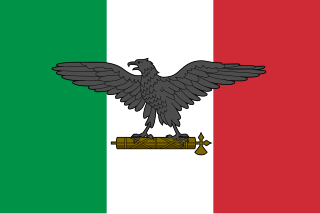 W
WThe National Republican Army was the army of the Italian Social Republic from 1943 to 1945 that fought on the side of Nazi Germany during World War II.
 W
WThe People’s Revolutionary Army (PRA) was the military of Grenada between 1979 and 1983.
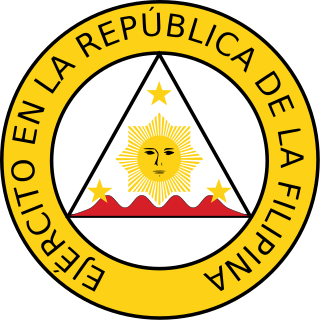 W
WThe Philippine Revolutionary Army later renamed Philippine Republican Army..
 W
WThe Workers' and Peasants' Red Army, frequently shortened to Red Army, was the army and the air force of the Russian Soviet Federative Socialist Republic and, after 1922, the Union of Soviet Socialist Republics. The army was established immediately after the 1917 October Revolution. The Bolsheviks raised an army to oppose the military confederations of their adversaries during the Russian Civil War. Beginning in February 1946, the Red Army, along with the Soviet Navy, embodied the main component of the Soviet Armed Forces; taking the official name of "Soviet Army", until its dissolution in December 1991.
 W
WThe Rhodesian Security Forces were the military forces of the Rhodesian government. The Rhodesian Security Forces consisted of a ground force, the Rhodesian Air Force, the British South Africa Police (BSAP), and various personnel affiliated to the Rhodesian Ministry of Internal Affairs (INTAF). Despite the impact of economic and diplomatic sanctions, Rhodesia was able to develop and maintain a potent and professional military capability.
 W
WThe Royal Hungarian Army was the name given to the land forces of the Kingdom of Hungary in the period from 1922 to 1945. Its name was inherited from the Royal Hungarian Honvéd which went under the same Hungarian title of Magyar Királyi Honvédség from 1867 to 1918. Initially restricted by the Treaty of Trianon to 35,000 men, the army was steadily upgraded during the 1930s and fought on the side of the Axis powers in the Second World War.
 W
WThe Scots Army, was the army of the Kingdom of Scotland between the Restoration in 1660 and the Acts of Union of 1707. A small standing army was established at the Restoration, which was mainly engaged in opposing Covenanter rebellions and guerrilla warfare pursued by the Cameronians in the East. There were also attempts to found a larger militia. By the Glorious Revolution in 1688–89 the standing army was over 3,500 men. Several new regiments were raised to defend the new regime and, although some were soon disbanded several took part in William II's continental wars. By the time of the Act of Union in 1707, the army had seven units of infantry, two of horse and one troop of Horse Guards. Early units wore grey, but adopted red like the English army after 1684. In 1707 the existing regiments were incorporated into the British Army and new Scottish and particularly Highland regiments would be raised from the 1740s, some of which had a long history within the army.
 W
WThe South Lebanon Army or South Lebanese Army (SLA), also known as Lahad Army and De Facto Forces (DFF), was a Lebanese Christian-dominated militia which was active during the Lebanese Civil War and its aftermath, until it was disbanded in the year 2000. It was originally named the Free Lebanon Army, which split from the Army of Free Lebanon. After 1979, the militia mainly operated in southern Lebanon under the authority of Saad Haddad's Government of Free Lebanon. It was supported by Israel, and became its primary ally in Lebanon during the 1985–2000 South Lebanon conflict to fight against Hezbollah. The United Nations did not want to give them the status of a proper army so they were referred to by the UN as the De Facto Forces.
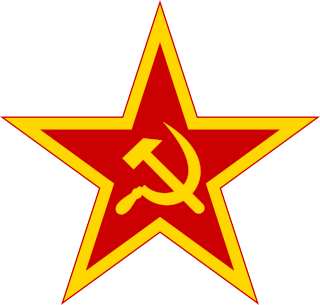 W
WThe Soviet Ground Forces was the main land warfare uniform service branch of the Soviet Armed Forces existed between February 1946 until when the Soviet Union ceased to exist in December 1991. It was principally succeeded by the Ground Forces of the Russian Federation.
 W
WThe Spanish Republican Army was the main branch of the Armed Forces of the Second Spanish Republic between 1931 and 1939.
 W
WThe Texian Army, also known as the Revolutionary Army and Army of the People, was the land warfare branch of the Texian armed forces during the Texas Revolution. It spontaneously formed from the Texian Militia in October 1835 following the Battle of Gonzales. Along with the Texian Navy, it helped the Republic of Texas win independence from the Centralist Republic of Mexico on May 14, 1836 at the Treaties of Velasco. Although the Texas Army was officially established by the Consultation of the Republic of Texas on November 13, 1835, it did not replace the Texian Army until after the Battle of San Jacinto.
 W
WThe Tibetan Army was the military force of Tibet after its de facto independence in 1912 until the 1950s. As a ground army modernised with the assistance of British training and equipment, it served as the de facto armed forces of the Tibetan government.
 W
WThe Ukrainian People's Army, also known as the Ukrainian National Army (UNA) or simply as Petliurovtsi was the army of the Ukrainian People's Republic (1917–1921). They were often quickly reorganized units of the former Imperial Russian Army or newly formed volunteer detachments that later joined the national armed forces. The army lacked a certain degree of uniformity, adequate leadership to keep discipline and morale. Unlike the Ukrainian Galician Army, the Ukrainian People's Army did not manage to evolve a solid organizational structure, and consisted mostly of volunteer units, not regulars.
 W
WThe Army of the Republic of Vietnam were the ground forces of the South Vietnamese military from its inception in 1955 to the Fall of Saigon in April 1975. It is estimated to have suffered 1,394,000 casualties during the Vietnam War.
 W
WOn March 8, 1949, after the Élysée Accords, the State of Vietnam was recognized by France as an independent country ruled by Vietnamese Emperor Bảo Đại. The Vietnamese National Army or Vietnam National Army was the State of Vietnam's military force created shortly after that. It was commanded by Vietnamese General Hinh and was loyal to Bảo Đại. The VNA fought in joint operations with the French Union's French Far East Expeditionary Corps (CEFEO) against the communist Việt Minh forces led by Ho Chi Minh. Different units within the VNA fought in a wide range of campaigns including the Battle of Nà Sản (1952), Operation Hautes Alpes (1953), Operation Atlas (1953) and the Battle of Dien Bien Phu (1954).
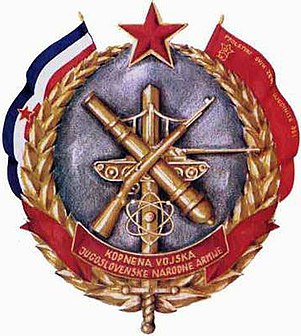 W
WThe Yugoslav Ground Forces was the ground forces branch of the Yugoslav People's Army (JNA) from 1 March 1945 until 20 May 1992 when it became the Ground Forces of Serbia and Montenegro under the threat of sanctions.
 W
WThe Yugoslav People's Army, also called the Yugoslav National Army, was the military of Yugoslavia from 1945 to 1992 and primary part of Yugoslavia armed forces.